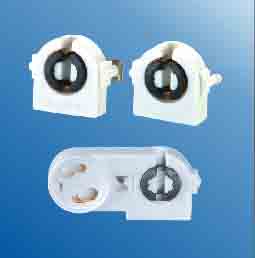

LEDs don’t have a filament to burn out or break; therefore, they last much longer than conventional bulbs. Given that a very small semiconductor chip runs an LED, they are very durable and tend to last many thousands of hours. Moreover, LEDs are “instant on,” much like halogen lamps, and thus convenient for use in applications that are subject to frequent or potential on-off cycling. Conversely, HID lamps are more fragile and have to warm up (15 – 25 seconds) during ignition. However, HID lights are much brighter than current LED configurations. This is because the side-emitting light found with HIDs is much easier to focus; the front-emitting nature of LEDs does not lend itself to a tightly focused beam.
Efficiency: LEDs produce more light per watt than incandescent bulbs.Their efficiency is not affected by shape and size, unlike Fluorescent light bulbs or tubes.
Color: LEDs can emit light of an intended color without the use of the color filters that traditional lighting methods require. This is more efficient and can lower initial costs.
Size: LEDs can be very small (smaller than 2 mm2 and are easily populated onto printed circuit boards.
On/Off time: LEDs light up very quickly. A typical red indicator LED will achieve full brightness in under a microsecond.LEDs used in communications devices can have even faster response times.
Cycling: LEDs are ideal for use in applications that are subject to frequent on-off cycling, unlike fluorescent lamps that burn out more quickly when cycled frequently, or HID lamps that require a long time before restarting.
Dimming: LEDs can very easily be dimmed either by pulse-width modulation or lowering the forward current.
Cool light: In contrast to most light sources, LEDs radiate very little heat in the form of IR that can cause damage to sensitive objects or fabrics. Wasted energy is dispersed as heat through the base of the LED.
Slow failure: LEDs mostly fail by dimming over time, rather than the abrupt burn-out of incandescent bulbs.
Lifetime: LEDs can have a relatively long useful life. One report estimates 35,000 to 50,000 hours of useful life, though time to complete failure may be longer.Fluorescent tubes typically are rated at about 10,000 to 15,000 hours, depending partly on the conditions of use, and incandescent light bulbs at 1,000–2,000 hours.
Shock resistance: LEDs, being solid state components, are difficult to damage with external shock, unlike fluorescent and incandescent bulbs which are fragile.
Focus: The solid package of the LED can be designed to focus its light. Incandescent and fluorescent sources often require an external reflector to collect light and direct it in a usable manner.
Low toxicity: LEDs do not contain mercury, unlike fluorescent lamps.

HID lighting is still preferred by most divers given the superior intensity and tight focus. However, LED technology is changing rapidly and it is foreseeable that LEDs will eventually surpass the performance of HID lighting.
James supply the lamp holders, bulb holders, E27 lamp holder and GU10 lamp holder 30 years!
Copyright @2012-2016 James Lighting Ceramics & Electronic CO.,LTD